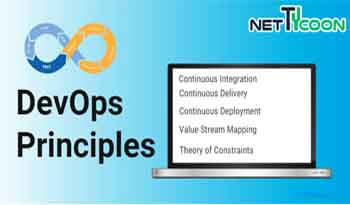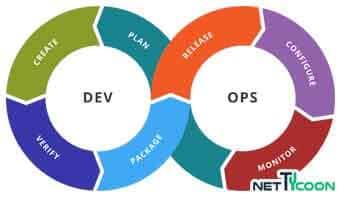
A comprehensive guide to DevOps Principle
What is the DevOps Principle?
DevOps principles include fast feedback response, validation ideas, continuous delivery, and automation. since we have shrouded the Agile standards in the past section, we should take a gander at the most well-known DevOps standards.
- Client-Centric Action
- Continuously Create With The End In Mind
- Start to finish Responsibility
- Cross-Functional Autonomous Team
- Nonstop Improvement
- Cross-Functional Autonomous Teams
- Computerize Everything
The DevOps Principle includes the following:
- Client-Centric Action:
DevOps Principle is basic to have short input circles where you straightforwardly speak with end-clients and genuine clients. You ought to likewise guarantee that the exercises that the group performs are just revolved around these customers. If you need to meet your client’s prerequisites, you should act like a lean startup and consistently enhance your cycles.
On the off chance that there is a system that isn’t working, you ought to have the guts to utilize another one. You need to distinguish the items and administrations that enchant your clients the most and put resources into improving those items and administrations.
- Continuously Create With The End In Mind:
Each association should now relinquish the cycle arranged and the cascade approach. In those methodologies, an individual or a group takes a shot at a particular capacity or function without taking a gander at the total picture. Associations should begin acting like item organizations and spotlight just on building working items. Workers should all share a designing attitude, which will permit them to imagine the last item.
- Start to finish Responsibility:
DevOps Principle, the advancement group will deal with creating arrangements or items, and afterward, hand those items over to the Operations group. The Operations group will at that point convey those items to clients just as look after them. In DevOps, the groups are sorted out vertically, which implies that each group in the association is responsible.
The items and administrations that are created by these groups will consistently stay under their core interest. These groups will likewise distinguish approaches to help and improve execution, which will upgrade the degree of duty, subsequently expanding the nature of items.
- Cross-Functional Autonomous Teams:
In most item associations, the groups must be completely free all through the cycle or lifecycle of the item. This implies they have to adjust the aptitudes in the group. This additionally implies the individuals from the group ought to be knowledgeable and have enough data concerning what different groups are doing. These groups will develop quickly and create items that will meet client prerequisites. The input circle may decrease as the groups recognize what should be done to meet the necessities.
- Nonstop Improvement
Associations should persistently adjust to guarantee that they consolidate the changing conditions remembering a change for client needs, innovation, and enactment. In DevOps, a solid spotlight is constantly kept up on the nonstop improvement of cycles to speed up, enhance costs, improve conveyance, and limit squander.
The association ought to likewise zero in on improving the items or administrations that it creates. Thusly, groups need to test to guarantee that they gain from their disappointments and create powerful cycles. A life-affirming guideline is to flop more to find out additional.
- Computerize Everything:
Associations should progress in the direction of persistently improving their cycles. Task this, the association must dispose of some waste. Over the most recent couple of years, numerous organizations have distinguished an approach to wipe out waste from various cycles to improve the items and administrations that it sends.
As an association, you ought to consistently consider approaches to mechanize the product improvement measure and the framework scene by building cloud stages that will permit you to see the foundation as a program or code.
Key Concepts and Metrics in DevOps Principle :
- Zero in On Deployment Lead Time:
DevOps Principle, the lead time is an aspect of the worth stream, and it begins when a designer in the worth stream needs to change the form of the product. The time taken for the architect to drive the change into the product, run that adjustment underway, and acquire input from the client viewing the change is determined as the organization time.
Rather than preparing huge clumps of work in brief periods, the objective is to test littler clusters of work. The objective is to test and work the product while chipping away at its plan and advancement This will improve the nature of work and empower the group to build up the product quicker. That is the reason groups should break the undertaking into littler fragments before they start taking a shot at their turn of events.
- Cycle Time and Lead Time
DevOps Principle, the lead time is one of the measures or standards used to gauge the presentation of the group. The other measure is the handling time. The lead-time starts when the client makes a solicitation, and it closes when the solicitation is met. The preparation time begins when the group starts to chip away at the client’s solicitation.
It doesn’t consider when the work or cycle is in the activity line. Since the client encounters lead time, we will zero in on the best way to limit it. Specialists recommend that groups should take a gander at the handling time and recognize approaches to lessen it.
For more information regarding the DevOps Principle, please contact us, and follow us on Facebook and Twitter



